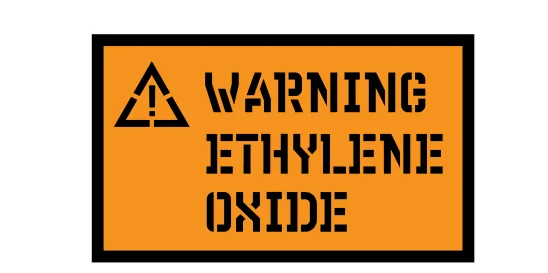The Environmental Protection Agency issued a final rule on March 14 that will require significantly reduced emissions from commercial facilities that sterilize medical devices and other equipment using ethylene oxide gas (“EtO Rule”). The EtO Rule amends the National Emission Standards for Hazardous Air Pollutants (“NESHAP”), 40 C.F.R. Part 63, Subpart O, and is projected to reduce EtO emissions by over 90 percent nationwide for commercial sterilizers. The impetus for the Rule is a complaint filed by Earthjustice on December 14, 2022, in which the non-governmental organization (“NGO”) requested both injunctive and declaratory relief based upon its claim that the Environmental Protection Agency (“EPA”) had violated Section 112(d) of the Clean Air Act for the past 16 years by failing to review and revise air toxics standards for commercial sterilizers.
Emissions Controls and Reporting
The EtO Rule imposes strengthened standards for EtO emissions from the proposed rule following the receipt of public comments. It requires continuous emissions monitoring and quarterly reporting for most commercial sterilizers to ensure that emissions are controlled. Notably, the EtO Rule establishes revised standards for existing sources such as sterilization chamber vents and aeration room vents, as well as for previously unregulated emissions that escape via building leaks and chamber exhaust vents.
The EtO Rule also changes the way commercial sterilizers certify compliance. All commercial sterilizers will be required to submit performance evaluation reports, performance test reports, and compliance reports through EPA’s Central Data Exchange. Commercial sterilizers that use 100 pounds or more of EtO per year must use continuous emissions monitoring systems, requiring application of the emissions standards during all aspects of sterilization (which includes periods of startup, shutdown, and malfunctions) to support continued control of air emissions. The goal of such reporting is to provide data to neighboring communities as to the operations of commercial sterilizers to ensure EtO emissions are not entering the outdoor air before being captured and controlled. Importantly, the EtO Rule provides a timeline for compliance to require facilities that use larger amounts of EtO to comply sooner than other facilities given the agency’s concern that they pose the greater risk.
Potential Impact of the NESHAP Amendments
According to the Food and Drug Administration, about half of medical devices that require sterilization are treated with EtO.[1] Further, approximately 95 percent of all surgical kits made in the United States are treated with EtO.[2] This is because EtO is one of the few methods that penetrates all packing and will not damage delicate plastic or glass materials. Although a two-to-three-year compliance runway exists for facilities to meet the EtO Rule, it could potentially create a disruption to the medical device supply chain. There are currently 88 commercial sterilizers in the United States, with two facilities under construction, potentially impacted.
Future EPA Actions
EPA has stated that “its mission to protect human health and the environment, addressing ethylene oxide (EtO) is a priority for the Agency.”[3] In that regard, EPA is also expected to issue a final rule to reduce emissions of EtO from the chemical sector by amending existing rules that apply to the synthetic organic chemical manufacturing industry. On April 6, 2023, EPA announced a proposal to significantly reduce emissions of hazardous air pollutants from chemical plants, including EtO. In addition, EPA’s Office of Pesticide Programs also proposed on April 23, 2023, new mitigation measures for workers who use EtO to sterilize products and for other people in communities near sterilization facilities. Certain products containing EtO are considered pesticides under the Federal Insecticide, Fungicide, and Rodenticide Act because they can be used to kill viruses and bacteria.
Conclusion
Compliance with the EtO Rule will be an extensive undertaking for commercial sterilizers. Commercial sterilizers should began assessing their obligations as soon as possible to achieve compliance within the regulatory compliance period. This includes determining the applicable emissions limitations and options for compliance for each applicable facility. The installation of new equipment, facility retrofitting, and applicable permit amendments may be required.
Robert P. Scott also contributed to this article.
[1] Final Amendments to Air Toxics Standards for Ethylene Oxide Commercial Sterilization Facilities: FACT SHEET, EPA.gov, epa.gov/system/files/documents/2024-03/factsheet_etosterilizers_final_3-14-24.pdf (last visited March 31, 2024).
[2] Ethylene Oxide Proposed Interim Registration Review Decision, EPA.gov (March 2023), epa.gov/system/files/documents/2023-04/eto-pid.pdf.
[3] What EPA is Doing to Address Ethylene Oxide (EtO) and to Learn More About the Chemical, EPA.gov (last updated April 2, 2023), epa.gov/hazardous-air-pollutants-ethylene-oxide/what-epa-doing-address-ethylene-oxide-eto-and-learn-more#:~:text=As%20EPA%20pursues%20its%20mission,a%20priority%20for%20the%20Agency.




 />i
/>i

